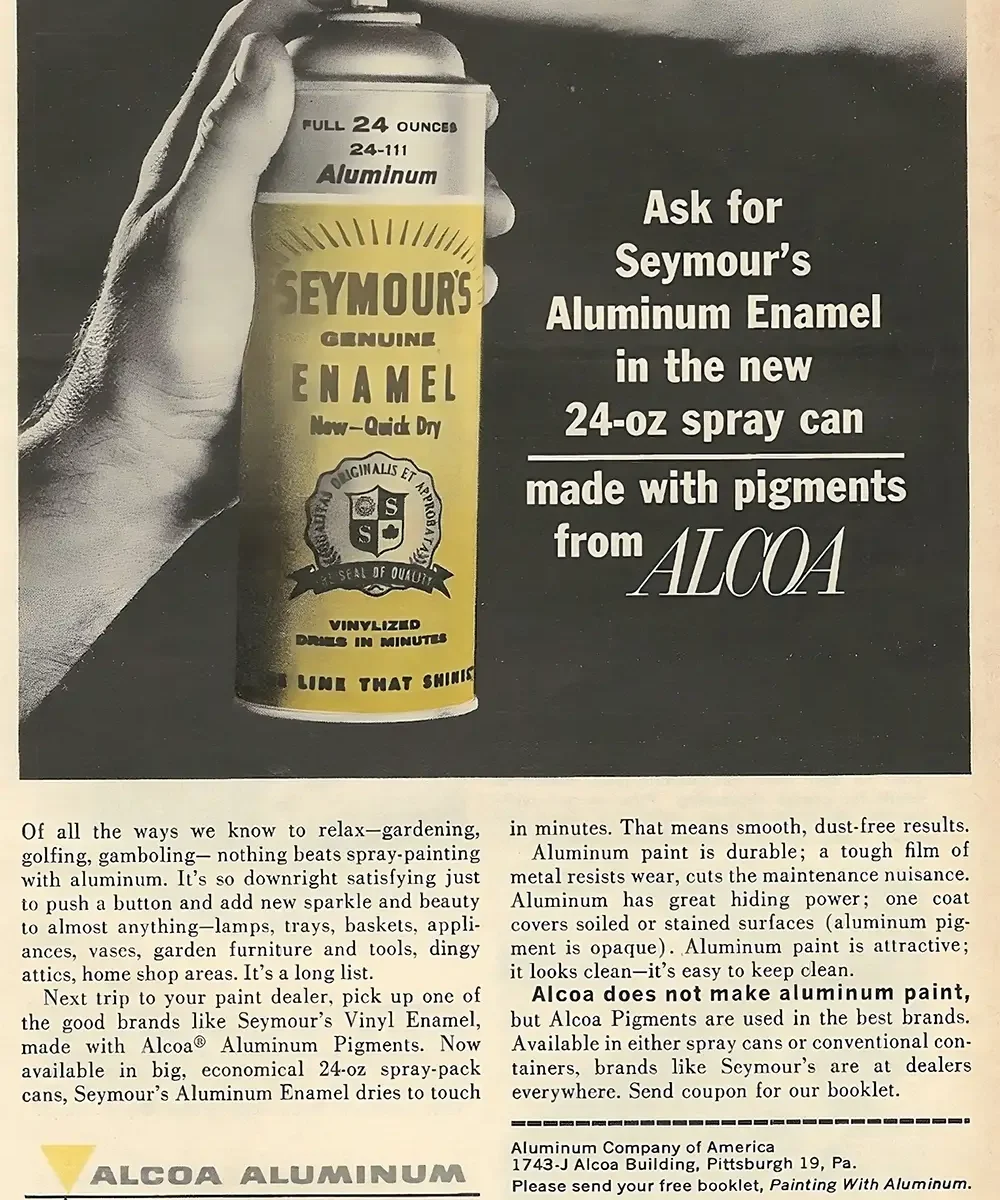The History Of Aerosol Spraypaint
The history of aerosol spraypaint goes like this: an aerosol refers to a dispersion of minute solid particles or tiny liquid droplets suspended within the air or another gas. These aerosols can occur naturally or be artificially created. The term “aerosol” was purportedly coined by Frederick G. Donnan during World War I, when he used it to describe an aero-solution, which referred to airborne clouds of microscopic particles.
Origins
The roots of aerosol technology can be traced back to as early as 1790 when France introduced self-pressurized carbonated beverages. In 1837, an individual named Perpigna revolutionized the field by inventing a soda siphon that featured a valve. As early as 1862, experimentation with metal spray cans was underway, although their construction with heavy steel made them impractical for commercial viability due to their bulky nature.
Fast forward to 1899, and inventors Helbling and Pertsch made a significant breakthrough by obtaining a patent for aerosols pressurized using methyl and ethyl chloride as propellants. This innovation marked an important milestone in the development of aerosol technology.
Erik Rotheim
Norwegian engineer Erik Rotheim (also spelled Eric Rotheim) played a pivotal role in the evolution of aerosol technology. On November 23, 1927, Rotheim secured a patent for the very first aerosol can and valve, which enabled the containment and dispensing of products and propellant systems. This groundbreaking invention served as the precursor to the modern aerosol can and valve that we are familiar with today. The significance of Rotheim’s achievement was acknowledged in 1998 when the Norwegian post office issued a commemorative stamp, celebrating the Norwegian contribution to the invention of the spray can.
Lyle Goodhue and William Sullivan
In the midst of World War II, the U.S. government allocated funds for research aimed at finding a portable solution to spray insecticides on malaria-carrying mosquitoes. Department of Agriculture researchers, Lyle Goodhue and William Sullivan, achieved a significant breakthrough in 1943. They successfully developed a compact aerosol can that could be pressurized using a liquefied gas, specifically a fluorocarbon. This pioneering design not only facilitated the application of insecticides but also laid the foundation for the development of various products, such as hair spray. Another notable inventor, Robert Abplanalp, also contributed to advancing aerosol technology during this period.
Robert Abplanalp-The Valve Crimp
In 1949, a young inventor named Robert H. Abplanalp revolutionized aerosol technology with his creation of the crimp-on valve. This innovative valve design allowed liquids to be sprayed from a can under the pressure of an inert gas. The availability of spray cans, primarily filled with insecticides, to the public in 1947 was a result of their successful use by U.S. soldiers in preventing insect-borne diseases. Abplanalp’s lightweight aluminum cans made the dispensing of liquids, foams, powders, and creams not only practical but also affordable.
In 1953, Abplanalp obtained a patent for his crimp-on valve, specifically designed for dispensing gases under pressure. His company, Precision Valve Corporation, quickly rose to prominence, earning substantial revenue by manufacturing over one billion aerosol cans annually in the United States and half a billion in ten other countries.
However, in the mid-1970s, growing concerns about fluorocarbons’ adverse effects on the ozone layer prompted Abplanalp to return to the laboratory in search of a solution. By substituting water-soluble hydrocarbons for the harmful fluorocarbons, he developed an environmentally friendly aerosol can that posed no harm to the environment. This breakthrough propelled the production of aerosol spray can products into high gear.
Robert Abplanalp’s contributions extended beyond the crimp-on valve invention. He also introduced the “Aquasol” or pump spray, which utilized water-soluble hydrocarbons as a propellant source, and developed the first clog-free valve for spray cans.
Of Aerosol Spraypaint In A Can
In the year 1949, Edward Seymour made a significant breakthrough in the world of paint with the invention of canned spray paint. The initial color introduced was aluminum. During the creative process, Edward Seymour’s wife, Bonnie, provided a valuable suggestion to fill an aerosol can with paint, leading to their innovative approach. This paved the way for the establishment of Seymour of Sycamore, Inc. in Chicago, USA, as a manufacturing company specializing in spray paints. Edward Seymour’s invention marked a pivotal moment in the history of paint application and opened up new possibilities for artistic expression and industrial coatings.
[cited article]





